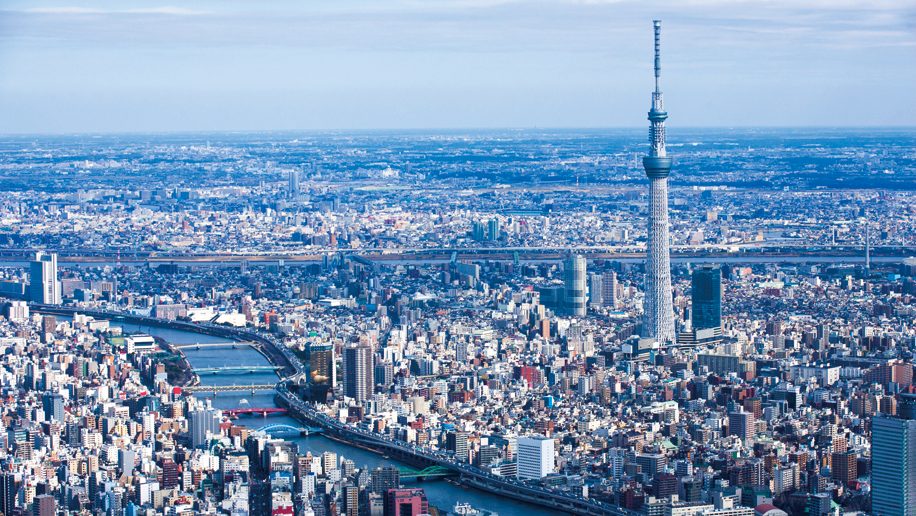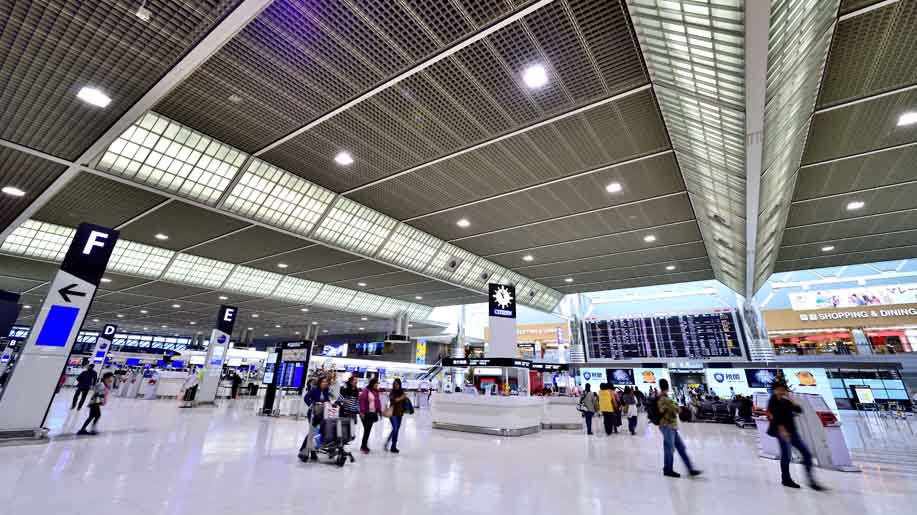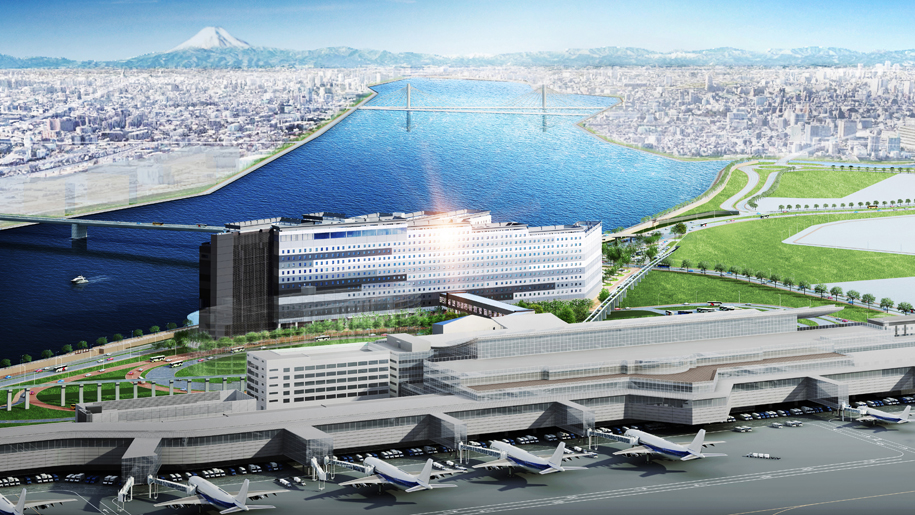
Japan is a popular travel destination in the Asia-Pacific region. With the 2020 Summer Olympics (from July 24 to August 9) and Paralympics (from August 25 to September 6) to be held in Tokyo during the summer season, Japan is set to attract a larger number of inbound visitors this year.
If you are planning to visit Japan sometime this year, we’ve rounded up eight things that you need to know before your trip.
1. Consumption tax has increased from eight to 10 per cent
Japan raised the consumption tax from eight to 10 per cent from October 2019 as a way to cover the growing cost of Japan’s aging population.
Under the new policy, some items still keep the original tax rate of eight per cent, though this is now called “reduced tax rate” after the tax hike. These eligible items include subscribed newspapers published twice or more per week, as well as food and drinks excluding liquors and eating-out services.
Regarding the reduced tax rate policy on food and non-alcoholic beverages, it should be noted that you can only enjoy the eight per cent reduced tax rate if you choose to take out the food and drinks that you purchase, instead of eating or drinking them inside the store where you purchase them or dining in a restaurant – which will be considered as “eating-out services” mentioned above and you’ll be charged the standard tax rate of 10 per cent.
This covers all kinds of eateries such as restaurants, bars, cafes, and even convenience stores that provide tables, chairs and/or other suitable equipment for customers to dine in. Therefore, when you shop at convenience stores, remember to tell the clerk that you are taking out the food and drinks you buy.
Local news website The Japan Times reported that customers might be able to get a refund of the two per cent tax increase for products or services purchased from small- and medium-sized businesses if the purchase is made using cashless payments like a credit card, a prepaid electronic money card, or a smartphone with a wallet app. The refund will be in the form of digital points that users can accumulate and use later for other purchases.
For international tourists shopping in Japan, purchases that total ¥5,000 (US$46.3) or more qualify for a tax refund, though it also depends on the type of products.

2. A new accommodation tax (though it's suspended during the Tokyo Olympics)
International visitors staying at all accommodation facilities in Tokyo, Osaka, Kyoto, Kanazawa in Ishikawa Prefecture and Kutchan in Hokkaido need to pay an accommodation tax for each night they stay in the accommodation.
The accommodation tax in Tokyo, according to Tokyo Metropolitan Government, will only be charged if the room rate exceeds ¥10,000 (US$93) per person per night. For room rates ranging between ¥10,001 and ¥14,999 per person per night, each guest will be charged an accommodation tax of ¥100 (US$0.9); while for room rates reaching ¥15,000 (US$139) or higher per person per night, the accommodation tax is ¥200 (US$1.9).
Tokyo Metropolitan Government said the imposition of the accommodation tax is “to enhance the attraction of global city Tokyo and help cover the expenses required for measures to promote tourism”.
In Osaka, Kyoto and Kanazawa, the accommodation tax is also charged per night per person based on the room rate; while in Kutchan, the accommodation tax accounts for two per cent of the room rate.
The good news is that, from July 1 to September 30 this year, the accommodation tax levied on all guests staying in Tokyo will be suspended for three months during the Tokyo Olympic Games.
We have rounded up a few new hotels to stay in Tokyo, as well as new attractions, restaurants and bars.
In addition to the accommodation tax and the increased consumption tax mentioned above, other taxes that international visitors will have to pay include the increased airport tax due to the consumption tax hike and a departure tax of ¥1,000 (US$9.2), which, effective from January 9 last year, will be directly added to the travellers’ airfares and ship fares.

3. Passengers will need to reserve seats with space for oversized baggage on Tokaido-Sanyo-Kyushu Shinkansen from May 2020
In Japan, it is very convenient to take Shinkansen, Japan’s bullet train, to travel between different cities in the country.
Central Japan Railway Company has announced that, starting May 2020, passengers travelling on the Tokaido-Sanyo-Kyushu Shinkansen will be required to reserve a seat with an oversized baggage area if the external dimensions (height + width + depth) of the baggage they bring exceed 160 cm or 62 inches.
The railway company said this size is roughly the same as that for which an oversized baggage fee is charged on international flights, though it differs by airlines.
Currently, each passenger is allowed to bring two pieces of baggage on board the train, and each bag must weigh less than 30 kg and its external dimensions must not exceed 250 cm or 98 inches.
The seats with an oversized baggage area refer to the five seats in the last row in a standard car, or the four seats in the last row in First-class Cars (also known as Green Cars). Passengers seated in these reserved seats can use the space behind them to store their oversized baggage.
However, not all the trains are equipped with such seats with oversized baggage area. The railway company said further details about eligible trains with these seats will be provided in April this year before the launch of this service.
The railway company will introduce this new service on three Shinkansen lines, including the Tokaido Line, which runs between Tokyo and Nagoya, Kyoto and Osaka; the Sanyo Line, which further connects Osaka with Kobe, Hiroshima and Hakata; as well as the Kyushu Line that links Hakata with Kumamoto and Kagoshima located at the southwestern tip of the island of Kyushu.
Passengers can reserve these kinds of seats via the Smart EX or Shinkansen Express Ride app or at ticket offices in JR stations from April this year. If you don’t make a reservation beforehand, you are required to pay a ¥1,000 (US$9.2) carry-on oversized baggage fee for each piece of baggage you bring. You may also be asked to move your oversized baggage to somewhere else designated by the conductor.
“In recent years, with the increasing number of passengers from overseas, the amount of large baggage has increased. With the Tokyo Olympic and Paralympic Games coming up, it is expected that the amount of them further increases,” said Central Japan Railway Company in a statement.
“To cope with this situation, we decided to start the reservation service for the oversized baggage area to ensure the security, safety and convenience of all passengers.”
With the introduction of this service, the railway company said passengers can secure space for their large baggage near their seat, and they can board and alight smoothly as the space is located near the doors.

4. Enhanced security screenings at airports
The Ministry of Land, Infrastructure, Transport and Tourism in Japan has implemented stricter security screenings at airports since September 2019 on the occasion of the 2019 Rugby World Cup.
Under the new security screening requirements, passengers need to take out everything in their pockets, take off their outerwear such as coats and jackets, and put them in the tray. Those wearing boots, safety shoes, thick-soled or ankle covering shoes also need to take off their shoes.
What’s more, screenings of prohibited items have been enhanced as well. Passengers may also be required on a random basis to undergo a pat-down screening or have their hands wiped with a cotton swab. Those who are found to carry prohibited items on the aircraft is subject to a fine of up to ¥500,000 (US$4,596) in accordance with the Japanese Civil Aeronautics Act.
Given the stricter security check requirements, travellers may need to arrive at the airport earlier to save time for the security screenings.

5. More airlines are flying to Tokyo’s Haneda Airport
Tokyo has two international airports: Narita Airport and Haneda Airport. While both airports serve the Greater Tokyo Area, Haneda Airport is closer to Tokyo’s city centre.
Business Traveller Asia-Pacific previously reported that quite a few airlines have confirmed that they are flying to Haneda Airport this year. Some of them will launch new routes to Haneda Airport, while others will switch part or all of their Tokyo services from Narita Airport to Haneda Airport.
These airlines include Japan Airlines, ANA, Qantas, Virgin Australia, Finnair, SAS, American Airlines, Delta and United.
We have a guide on how to travel from both airports to Tokyo’s city centre.
What’s more, Haneda Airport Garden, a new commercial complex, is set to open next to Haneda Airport’s International Terminal in spring this year. This mixed-use facility will be home to two airport hotels offering a total of over 1,700 rooms, a hot spring facility, a shopping mall, events and meeting space, as well as a bus terminal.

6. Stricter restrictions on smoking indoors will be fully enacted from April 1
In June 2018, Japan partially revised the Health Promotion Act to include stricter restrictions on smoking in public places in order to eliminate unwanted second-hand tobacco smoke and protect children and those with health issues from exposure to tobacco smoke.
The new restrictions on smoking have started to be implemented in stages since July 2019, right before the 2019 Rugby World Cup that was held in Tokyo last September. Since then, smoking has been banned in all government offices, hospitals, schools and children welfare facilities.
The new regulations will then come into full force from April 1 this year before the Tokyo Olympic and Paralympic Games. Smoking will be banned “in principle” in all restaurants, hotels, malls, offices, public transport, as well as sports and entertainment facilities.
However, according to Japan’s Ministry of Health, Labour and Welfare, for individuals or small or medium-sized businesses capitalised at up to ¥50 million (US$462,400) as well as restaurants and bars that have less than 100 sqm of customer space, smoking is permitted as long as the above eateries put up a sign indicating that smoking is allowed inside. In restaurants where there are no hired employees, the owner can also decide whether smoking is allowed indoors or not.
In other restaurants, smokers will need to go to designated outdoor smoking areas or indoor smoking rooms – which also include dedicated smoking rooms for those using heated tobacco products – though young people under 20 years old will not be allowed to enter these smoking rooms. Restaurants will also need to put up a sign indicating whether smoking is allowed inside.
Violators can face fines of up to ¥300,000 (US$2,780) for smokers and up to ¥500,000 (US$4,624) for facility managers.
In other news, smoking and vaping will both be prohibited in all indoor and outdoor Olympics and Paralympics venues.
7. Minimum ¥1 charge for plastic bags from July 1
Remember to bring your own shopping bag when you go to supermarkets or convenience stores in Japan. Starting July 1 this year, all the retailers in Japan will be obliged to charge customers a fee if they ask for plastic shopping bags.
According to The Japan Times, while retailers are allowed to set bag prices on their own, the government requires them to charge at least ¥1 (US$0.0092) for each bag, though bags that contain at lest 25 per cent plant-derived materials, marine biodegradable plastic bags and reusable bags with a width over 0.05 mm, are all exempt from the charges.
8. Some convenience stores are no longer open 24 hours a day
For night owls who like getting some snacks and drinks in nearby convenience stores during late night hours, this might not be good news as some convenience stores in Japan are ending 24-hour operations.
This comes after a 7-Eleven franchise store owner in Higashiosaka in Osaka prefecture decided to stop around-the-clock operations and only open the store from 6am to 1am without permission from its franchiser 7-Eleven in February last year. The Japan Times reported that the owner had cited manpower shortages as the reason.
After long-time discussions and disputes about the incident, 7-Eleven Japan decided to try out shorter business hours in several stores, with eight 7-Eleven stores ending 24-hour operations from November 1 last year.
Two other convenience store chains in Japan, Family Mart and Lawson, said they will also allow their franchise owners across Japan to shorten operating hours.
According to The Japan Times, Family Mart is thinking about allowing its franchise stores to close for part or all of the period between 11pm and 7am the following day either on a daily basis or only on Sundays as long as they inform the headquarters in advance. This new policy is expected to start as early as in March this year.












